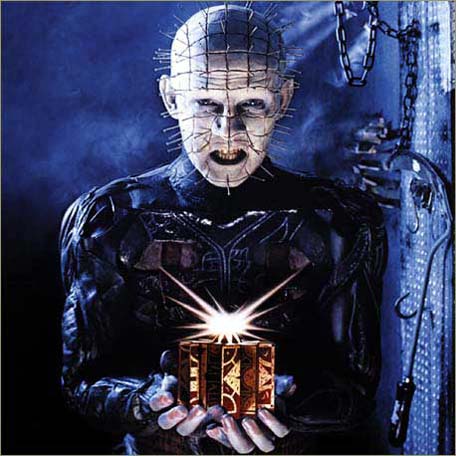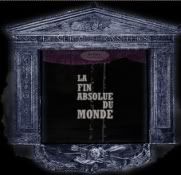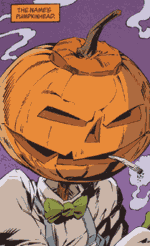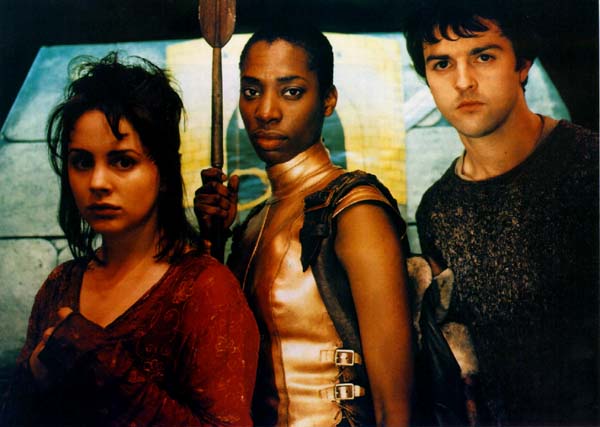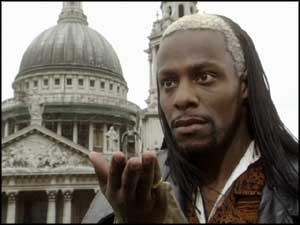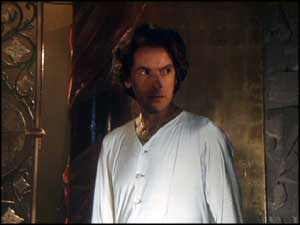
WONDER BOYS
You know, it’s easy to hate Michael Douglas. When we think of him, we think of the actor who was the poster boy for terrible early-90s erotic thrillers, getting grotty with Sharon Stone and Demi Moore in Basic Instinct and Disclosure respectively. More recently, we‘ve had to put up with sub-par blockbusters like The Sentinel, and his cameos in weak comedies such as You, Me and Dupree, and Ghosts of Girlfriends Past. If we’re being generous, we might allow him his performances in Wall Street, or Traffic (despite the fact that the film is not as wonderful as it was hailed on its release). But Michael Douglas can surprise you. Every now and again he’ll pop up in films like Falling Down, The Game, or Wonder Boys, and we remember he’s a talented actor, and not just Catherine Zeta Jones’ sex-addicted husband who got an Oscar for producing Once Flew Over the Cuckoo’s Nest.
Despite receiving good reviews, Wonder Boys flopped hard on its release in 2000 (hardly surprising given the awful poster campaigns and the tagline "A weekend from hell became the time of his life") and has never really been reappraised. It’s a shame, because the film is an excellent, sophisticated little dramatic comedy that deserves another look. Based on the novel by the Pulitzer Prize winning author Michael Chabon, it’s the story of a very bad weekend for pot-bellied, pot-smoking author/professor Grady Tripp (Douglas). He has still not finished the long-awaited follow-up to his acclaimed, award-winning first novel, The Arsonist’s Daughter, despite the fact that his page count is now in the tens of thousands. His wife has left him on the morning of the first day of the university’s weekend-long literary event, WordFest. His editor Terry Crabtree (Robert Downey Jr.) has flown into town with a tall transvestite in tow. He’s supposed to be there for WordFest but is really trying to sniff out Grady’s second novel. His mistress Sara (Frances McDormand), who happens to be married to Grady’s head of department, Walter, has just discovered that she is pregnant with his child. In a moment of kindness he decides to take unusual student James Leer (Tobey Maguire) under his dubious wing for the weekend. Before long, Grady is saddled with a stoned student who has not only killed Walter’s dog, but has stolen his priceless coat belonging to Marilyn Monroe. Over the course of the weekend, he must shield James, not only from the police, but from Terry’s advances, and decide what to do about Sara, his weed habit, and his ever-growing behemoth of a novel.
If we’re being honest, not a lot actually happens in Wonder Boys. The first night of the story takes up around half of the entire movie. But we are introduced, carefully, to each of the characters and we are allowed to make our own judgements, and a film’s willingness to take its time is a vastly underrated quality. The script is also hilariously funny in a very low-key, deadpan way, setting up wry zingers that seem tailor-made for old hands like McDormand and Downey Jr. At the same time it doesn’t shy away from the humour found in incredibly bizarre situations, such as an attempt to escape from an angry, short man who believes that Grady has stolen his car, or the difficulties of hiding a dog that’s been shot twice in the chest.

Director Curtis Hanson is best known for his work on LA Confidential and 8-Mile and seems like a curious choice for a film like this at first glance. However, he makes the actually rather bold choice of directing the film in the least obtrusive way possible. A less experienced director might have looked at the script and, panicking at the lack of action, thrown in some unnecessary flashy visuals or fiddled with the story’s structure. Hanson lets the scenes flow smoothly along. The excellent production design and locations speak volumes about the characters. Specifically, Grady’s house is a wonderfully lived-in mess covered with books and papers. Meanwhile, Sara and Walter’s home seems to be striving for a classy, literary elite feel. As James points out, standing outside looking in, “It’s colder in there”. It would also be a grievous error to describe Wonder Boys without mentioning the weather. The film is set in Pittsburgh in winter, and the snow and rain permeate the mood and texture of the film. Grady’s house, overflowing with its various odds and ends, is warm and comforting. The real world outside is cold and unwelcoming, and you feel for Grady as he answers the door clad in a comfy-looking pink dressing gown and a woollen hat. The contrast of warmth and cold is added to by the excellent, nostalgic soundtrack, featuring Bob Dylan, Neil Young, Leonard Cohen, John Lennon, and Van Morrison. There is also the small matter of Dylan's "Things Have Changed", written for the movie. Hanson trusts the setting and the cast to draw you into the story and get you interested in their lives. And what a cast it is.
Douglas has never been better used than here. Many will argue that Falling Down is his finest work, but I would beg to differ. In Wonder Boys he convincingly sheds his image and truly inhabits the role: You forget that you’re watching Michael Douglas. As Grady drags himself out his self-contained world into situations where he may have to be decisive and take responsibility, the actor keeps the character believable and, above all, likeable (a rare thing for a character played by Michael Douglas). A pre-Spider-Man Tobey Maguire works very well in the role of the talented but peculiar James Leer, juggling humour and melancholy. Katie Holmes has a smaller role as Grady’s student/tenant who continually tries to be a shoulder to cry on or, preferably, his new lover. It’s not a terribly demanding part but she’s convincing and surprisingly funny. Robert Downey Jr., before rehab, veers between auto-pilot and excellence, but Robert Downey Jr. on autopilot is still far more entertaining to watch to watch than most actors. He also gets an unexpected slapstick moment that works so well that it reminds us that, yes, he played Charlie Chaplin. There’s a nice cameo from Rip Torn as the pompous, but successful, author Q, and geek favourite Alan Tudyk pops up as a janitor interested in Errol Flynn’s sex life. Most underused, however, is the wonderful Frances McDormand. Despite winning an Oscar for Fargo, she’s still one the most underappreciated actresses in Hollywood. She makes the most of her screen-time, however, fashioning Sara into a strong-willed but kind-hearted woman. She clearly wants to be with Grady, but she isn’t going to make the decision for him. It’s a shame the film has such a dreadful, maudlin little coda, but it certainly doesn’t ruin the ninety minutes you’ve spent with the characters.

Wonder Boys takes great delight in satirising the literary world. From Grady’s class’ brutal evaluation of James Leer’s short story that starts the film (“Jesus, what is it with you Catholics?” moans one girl), to the self-importance of Q (Rip Torn), Wonder Boys shows writers to be narcissistic, vain, and often completely clueless. As Q takes the stage at WordFest, he takes a moment to size up the packed auditorium before intoning, with the gravitas of Orson Welles, “I…am a writer”. He receives rapturous applause. Shortly after, his bubble is popped when James drunkenly bursts out laughing. It is important to note, however, that although the film skewers the industry, and the people, it remains reverential of the work they produce, and it admires the commitment that these people have to the written word. Although we’re encouraged to laugh at Q, we are told that he is rich and successful. James may be a very strange young man but Grady and Terry’s admiration of his manuscript, “The Love Parade”, shows that he is also very talented. And there’s Grady himself, who, after ranting about fiction doesn’t mean anything anymore, is told by a heartbroken James that “‘Arsonists’ Daughter’ meant something. It meant something to me.”. Even Q remains impressed by his talent.
Wonder Boys may not be a perfect film, but it’s witty and intelligent in a way that a lot of more recent urbane indie films have tried hard to achieve but failed (Smart People, anyone?). Quirkiness, an interesting cast, and a good soundtrack mean nothing if you can’t connect with the characters, and where other “offbeat” films fail, Wonder Boys succeeds. It may be slow, but it leaves you with the warm glow attained after spending an evening in great company.
 Taking a left turn here, Dario Argento's classic mindbending nightmare is perfect for those who want something a little different this Halloween. Suzie Banion arrives at a German dance academy, only to find something terrifying is roaming the school at night. And, basically, that's it. There are some odd plot details, such as Suzie trying to make friends, and a young, dubbed, Udo Kier pops up near the end to explain what you might have figured out already. But, as any Argento fan will tell you, if you're following the plot properly you're just going to get a headache. The plot of Suspiria is a flimsy excuse for the director to indulge in gloriously gory set-pieces, fantastically insane camera work, brightly lit in primary colours and scored with Goblin's metal music. Trying to explain what makes Suspiria so good is difficult. It's a technicolour nightmare, a blood-soaked fairytale. And it's tremendous fun. So, basically, go and watch it.
Taking a left turn here, Dario Argento's classic mindbending nightmare is perfect for those who want something a little different this Halloween. Suzie Banion arrives at a German dance academy, only to find something terrifying is roaming the school at night. And, basically, that's it. There are some odd plot details, such as Suzie trying to make friends, and a young, dubbed, Udo Kier pops up near the end to explain what you might have figured out already. But, as any Argento fan will tell you, if you're following the plot properly you're just going to get a headache. The plot of Suspiria is a flimsy excuse for the director to indulge in gloriously gory set-pieces, fantastically insane camera work, brightly lit in primary colours and scored with Goblin's metal music. Trying to explain what makes Suspiria so good is difficult. It's a technicolour nightmare, a blood-soaked fairytale. And it's tremendous fun. So, basically, go and watch it.  A Tale of Two Sisters (2003)
A Tale of Two Sisters (2003) 

